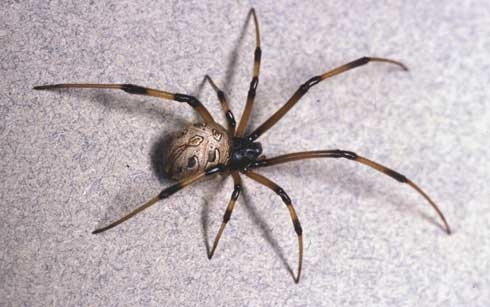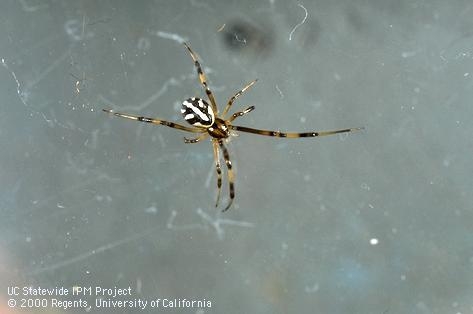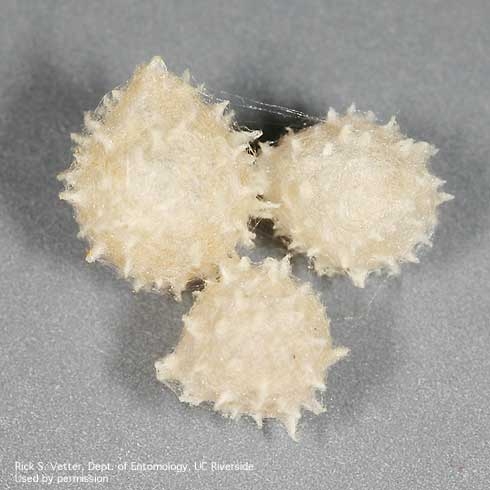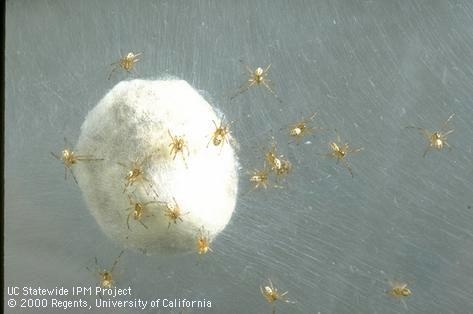[From the February 2013 issue of the UC IPM Green Bulletin newsletter]
During the last 10 years, a new widow spider has moved into parts of Southern California. The brown widow spider, Latrodectus geometricus, is closely related to the well-known 
A recent survey of widow spiders in Southern California led by retired UC Riverside entomologist Richard Vetter revealed new information about the distribution of brown widows. Currently brown widow spiders are known to be common in Los Angeles, Orange, San Diego, Riverside and San Bernardino counties. They have also been reported in Ventura and Santa Barbara counties, and experts believe they may eventually move up the coast of California and also into the Central Valley.
Vetter's group also found that, like the black widow, brown widows are outdoor spiders rarely found inside homes. They also found brown widows tend to inhabit more exposed outdoor habitats such as under eaves or window ledges, garden furniture with solid—not mesh—tops, or recessed handles of plastic trash bins. Black widows, in contrast, prefer more protected habitats such as in garages or sheds, under debris or woodpiles, or in a protected hole in an outer wall. Unlike black widows, brown widows weren't found in natural dry habitats or agricultural areas; they prefer urban environments and structures.
Researchers report anecdotal evidence brown widows may be displacing the black widow spider in some urban habitats. This is probably good news for residents, because, despite the growing numbers of brown widow spiders, their bites are infrequently reported compared to black widow bites and rarely cause severe symptoms in humans; there is only one verified case of a brown widow bite in Southern California, and reported symptoms were mild.
Brown widow spiders are mottled brown in all stages (Figure 2) and resemble immature black widows (Figure 3), so some skill is required to distinguish the two species.


The easiest way to identify an infestation of brown widows is to find the egg sacs, which have pointy protuberances (Figure 4) in contrast to the more round black widow egg sac (Figure 5).


For more about identifying brown widows, visit the UC Riverside Center for Invasive Species Research (CISR) Web site. For more about widow spiders and managing them, visit the CISR Web site or see Pest Notes: Black Widow and Other Widow Spiders. Details of the survey are reported in J. Med. Entomol. 49(4):947-951.